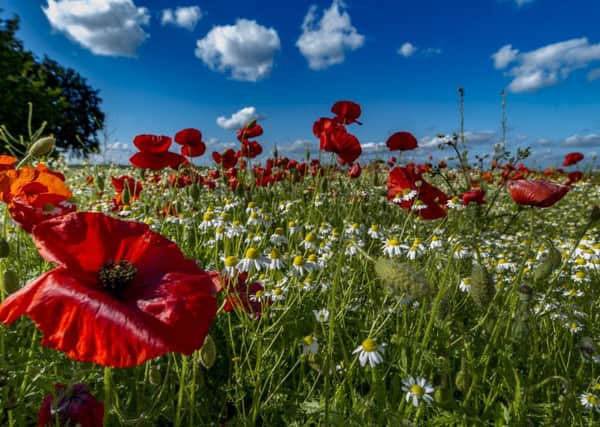Wildflowers' poignant reminder of futility of war


The poppy is particularly significant this year, as it has come to symbolise those who lost their lives in war. And this year that is especially meaningful, as it is the 100th anniversary of The Battle of the Somme, which began on July 1, 1916 and ended on November 18 with 1.3 million casualties, 650,000 of which were on the Allied side, 481,000 of those being British.
The first day alone saw some 57,470 British casualties, almost 20,000 of whom were killed, mown down by German machine guns and artillery, making it the single worst day in the history of the British Army.
Advertisement
Hide AdAdvertisement
Hide AdThe Allies spent seven days relentlessly shelling the German lines and mistakenly thought there would be nothing left when they sent their troops ‘over the top’ of the trenches. But they were gravely mistaken, for the Germans defences were stronger than anticipated. The Allies gained just three miles of territory for their efforts, ending in a stalemate, with German and Allied trenches separated by just a few hundred yards of ‘no man’s land’.
Many of the Pals units which marched so triumphantly off to do battle at the start of the war, hoping to be home before Christmas, were ravaged. The 11th East Lancashire battalion, for example, known as the Accrington Pals, sent 720 men into action – only 136 survived the first day.
After 141 days, the Allies had captured seven miles of territory but failed to break the German line. Some argue they would have succeeded had they continued and appalling weather conditions had abated. However, others disagree. In the event, the Germans made a strategic withdrawal in March 1917.
As we prepare to recall the terrible losses suffered 100 years ago, the flowers growing wild in this Leeds field are a poignant reminder of the futility of war and the fragility of human life. This week we begin a series of features to mark the battle.
Camera Details: Nikon D3s, Lens Nikon 12-24mm, aperture f/6.3, shutter speed 1/200s, ISO 1EV Under 200
Picture: James Hardisty
Words: Neil Hudson